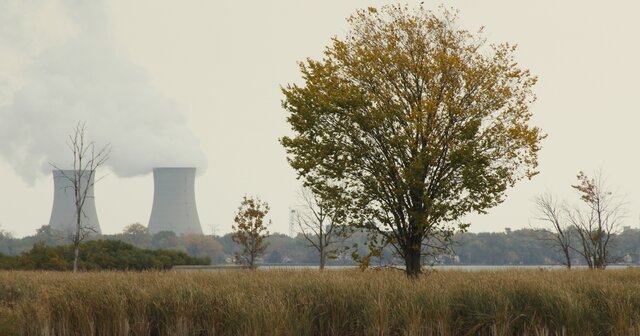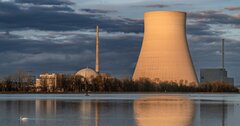

In 1979, the Three Mile Island nuclear facility suffered a meltdown. The crisis caused no injuries, and other parts of the plant continued to function for decades, but the event effectively killed growth in nuclear energy in the United States. And the chief impediment to American nuclear development has been an organization ostensibly created to foster its growth: the Nuclear Regulatory Commission. Since the commission was created in 1975, it has functioned almost entirely to prevent or delay the building of new nuclear capacity. France, Canada, South Korea, China and other governments have forged ahead to build gigawatts of new nuclear energy, leaving America in the dust
After half a century of near-stagnation, the Trump administration is changing this.
In one of a series of executive orders dedicated to revitalizing the American nuclear industry, President Trump’s Executive Order 14300 orders “the Reform of the Nuclear Regulatory Commission” through changes in the NRC’s culture, structure, and regulations.
The simplest change is found in Section 3: “Reforming the NRC’s Culture.” The organization must consider the “benefits of increased availability of, and innovation in, nuclear power to our economic and national security in addition to safety, health, and environmental considerations.”
Next is Section 4: “Reforming the NRC’s Structure.” The order mandates that the NRC be reorganized, in consultation with the Trump administration’s Department of Government Efficiency (DOGE) team, “to promote the expeditious processing of license applications and the adoption of innovative technology,” among other requirements like “reductions in force” (or layoffs). This, in and of itself, is a significant shift; the NRC is far from expeditious in its current approval processes. This shouldn’t be a surprise, as the commission has a perverse incentive to delay and expand the process. The NRC “charges applicants by the hour to process license applications, with prolonged timelines that maximize fees while throttling nuclear power development,” the executive order explains.
Finally, there’s Section 5: “Reforming and Modernizing the NRC’s Regulations.” First, this section mandates that the NRC undergo a “review and wholesale revision of its regulations and guidance documents” while working with “its DOGE Team, the Office of Management and Budget, and other executive departments and agencies as appropriate.” That revision is to be aimed at a variety of policy goals, including:
This section makes two other significant changes: the first is the establishment of fixed deadlines for the NRC’s licensing process. Among the specifics, the order imposes on the agency “a deadline of no more than 18 months for final decision on an application to construct and operate a new reactor of any type.” It also requires that the agency take no more than one year for a decision on the continued use of an existing reactor. Currently, the NRC takes, on average, 80 months– if it approves an application at all.
The second key change in the executive order is the mandated reconsideration of the linear no-threshold model. In the words of the policy analysis group Doomberg, the no-threshold model is the “main weapon of the NRC” and is “an unscientific ethos that treats all exposure to radiation, no matter how minute, as both dangerous and cumulative. In other words, there is no threshold below which otherwise insignificant exposures are considered harmless.”
One common example of the flaws in linear no-threshold thinking is that if we applied it to eating fruit, apples would have to be banned due to their trace amounts of cyanide. Never mind the health benefits of apples nor the fact that the body has time to deal with the small amounts of cyanide. LNT treats people as video game characters with a health bar that slowly ticks down to zero, not organisms that can process potentially dangerous inputs safely and without any long-term impact.
“Zero is an emotional number, and when any amount of radiation is viewed as inherently bad, the complete absence of exposure is treated as inherently good, regardless of the positive tradeoffs foregone as a consequence,” writes Doomberg. What it does do is put fear in the mind of the public.
Doomberg cites “a recent and scathing editorial” from The Journal of Nuclear Medicine explaining how adherence to the LNT model instead of radiation hormesis (the model taking into account the benefits of small radiation doses) may have made us sicker:
[A]doption of radiation hormesis might have led to reduction in cancer deaths by around 20%. This would have translated to preventing nearly 2 million cancer deaths in 2022 alone, given the staggering global toll of 9.7 million cancer deaths that year. Thus, the decision of advisory bodies to persist with the LNT model, despite published evidence supporting radiation hormesis, may have contributed to millions of preventable cancer deaths over recent decades.
Thankfully, with Executive Order 14300, the LNT model may be retired, nuclear plant licensing could be streamlined, and clean and abundant energy could be freed up to power the nation.
Permission to reprint this blog post in whole or in part is hereby granted, provided that the author (or authors) and the Mackinac Center for Public Policy are properly cited.
Get insightful commentary and the most reliable research on Michigan issues sent straight to your inbox.


The Mackinac Center for Public Policy is a nonprofit research and educational institute that advances the principles of free markets and limited government. Through our research and education programs, we challenge government overreach and advocate for a free-market approach to public policy that frees people to realize their potential and dreams.
Please consider contributing to our work to advance a freer and more prosperous state.

Donate | About | Blog | Pressroom | Publications | Careers | Site Map | Email Signup | Contact